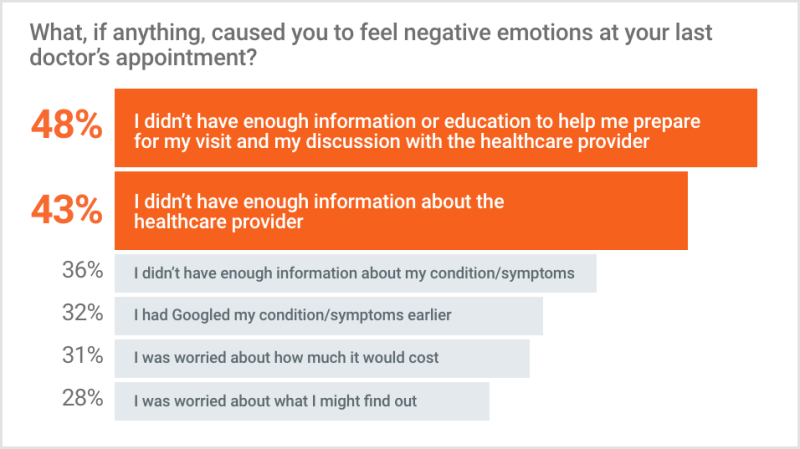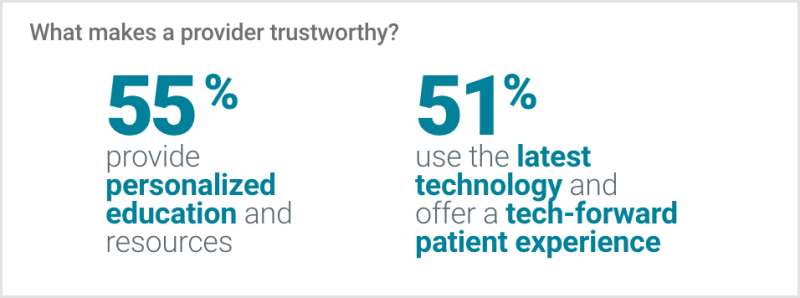Patient anxiety around the doctor’s visit is increasing year over year. What does this mean for healthcare providers? Patients are delaying visits or not going at all, satisfaction dips and patients feel unprepared to talk to their doctor—all which lead to decreases in outcomes.
Here's what the 2023 PatientPoint Patient Confidence Index conducted by OnePoll on behalf of PatientPoint found and what providers should consider doing about it.
The Anatomy of Patient Anxiety
Nearly half (48%) of Americans admitted to feeling anxious before their healthcare appointments. This represents a noticeable increase from the 39% reported the previous year.
Patients say insufficient information and not enough education about their condition/symptoms are the main cause of their anxiety

This lack of information leaves them feeling unprepared to talk to their doctor because they don’t know how to describe their symptoms or even know what questions to ask.

Interestingly, a significant portion of Americans (43%) expressed interest in pre-visit education. This underscores the importance of equipping patients with information before they step into the healthcare setting, alongside information provided in the office to feed patients information in moments that influence decision-making. Given that patients typically spend an average of 14 minutes in the waiting room and an additional 12-13 minutes in the exam room without a healthcare provider present, there is a significant opportunity to educate and empower patients in these moments when they’re actively thinking about their health and making healthcare decisions.
The Power of Knowledge
This is where engagement solutions across the care continuum play a pivotal role. Practices must connect pre-/post-visit patient messaging to health information that’s viewed in waiting and exam rooms to consistently help prepare and motivate patients to take an active role in their health.
43% said they’d find it helpful to get prompts in the exam room that reminded them about what to ask their doctor, and 33% said digital screens in the waiting room would be useful. Technology in the office gives patients an easy way to consume information when it’s most impactful.
And patients want doctors who provide education and use tech in the office.

Technology can be a powerful means of disseminating relevant health information at the right time, to the right patient. Patients can be better prepared to have more effective conversations with their doctor that ultimately lead to treatment adherence and better outcomes.
For practices and systems with PatientPoint engagement solutions, this approach has been shown to drive patient utilization of critical health services. We’ve helped our partners see a:
- 45% increase in mammograms
- 28% increase in flu vaccinations
- 20% increase in colon cancer screenings that lead to over $1 million in incremental revenue
- And 11% increase in cervical cancer screenings
The Financial Burden of Healthcare Costs
One final contributing factor to patient anxiety is their concern about not being able to afford their care or the potential treatment. 66% of Americans are afraid they won’t be able to afford their treatment this year; that’s significantly higher than last year’s 21%. For those who are concerned about not being able to afford treatment, they’re choosing to pay for necessities like education costs (56%), groceries (55%), gas/car maintenance (53%) and childcare costs (48%).
The cost of care is also causing people to postpone doctor’s visits. 52% delay doctor’s visits because they might not be able to afford their care.

Empowering Patients for Better Health
While people still remain financially burdened, providers can take a step in the right direction by giving patients the right education at the right time in the health journey to help them make informed decisions about their care. This will keep patient traffic high, empower patients to speak to their doctors about their symptoms and ultimately, get and stay on treatment to improve outcomes for the population at large.